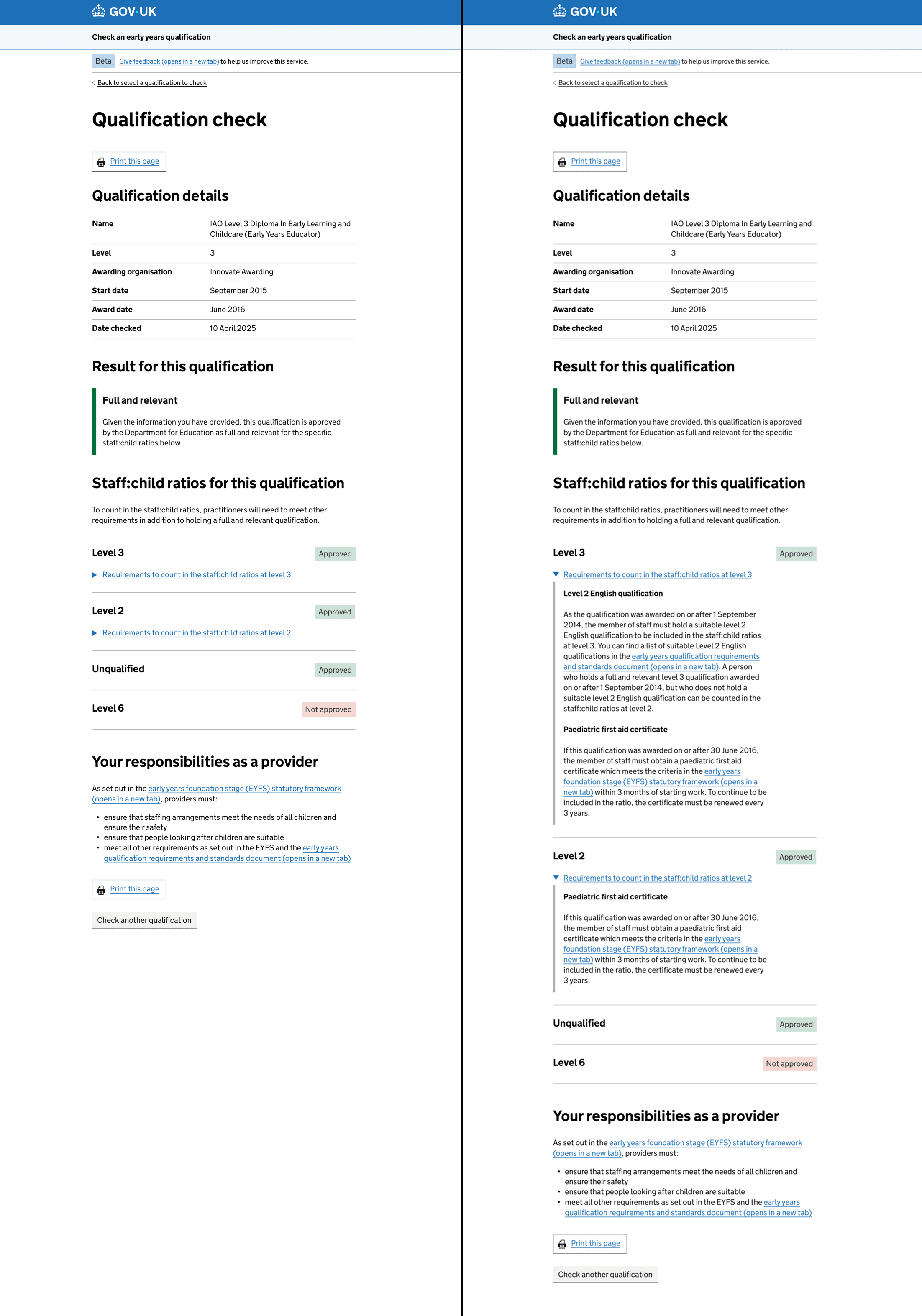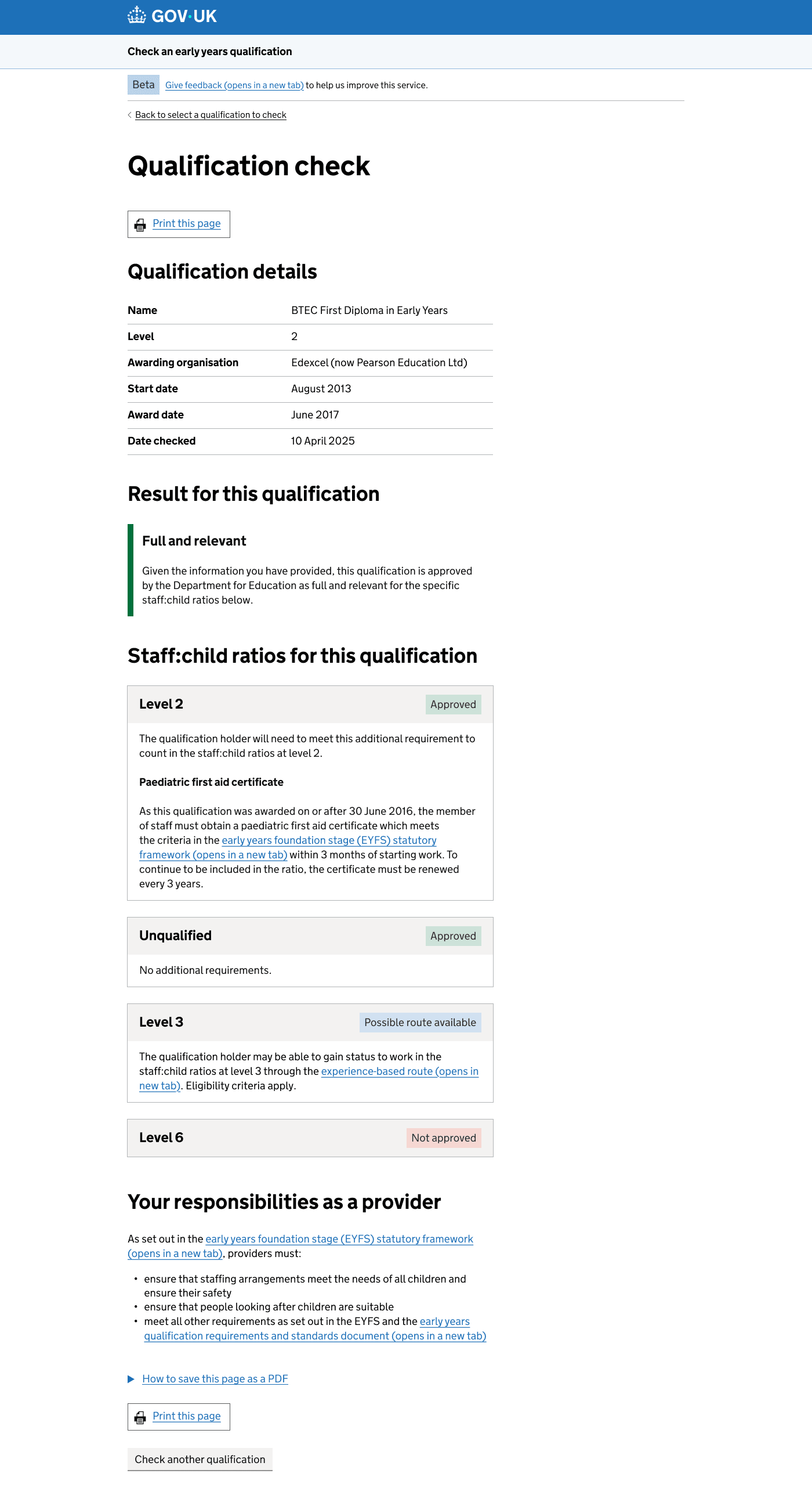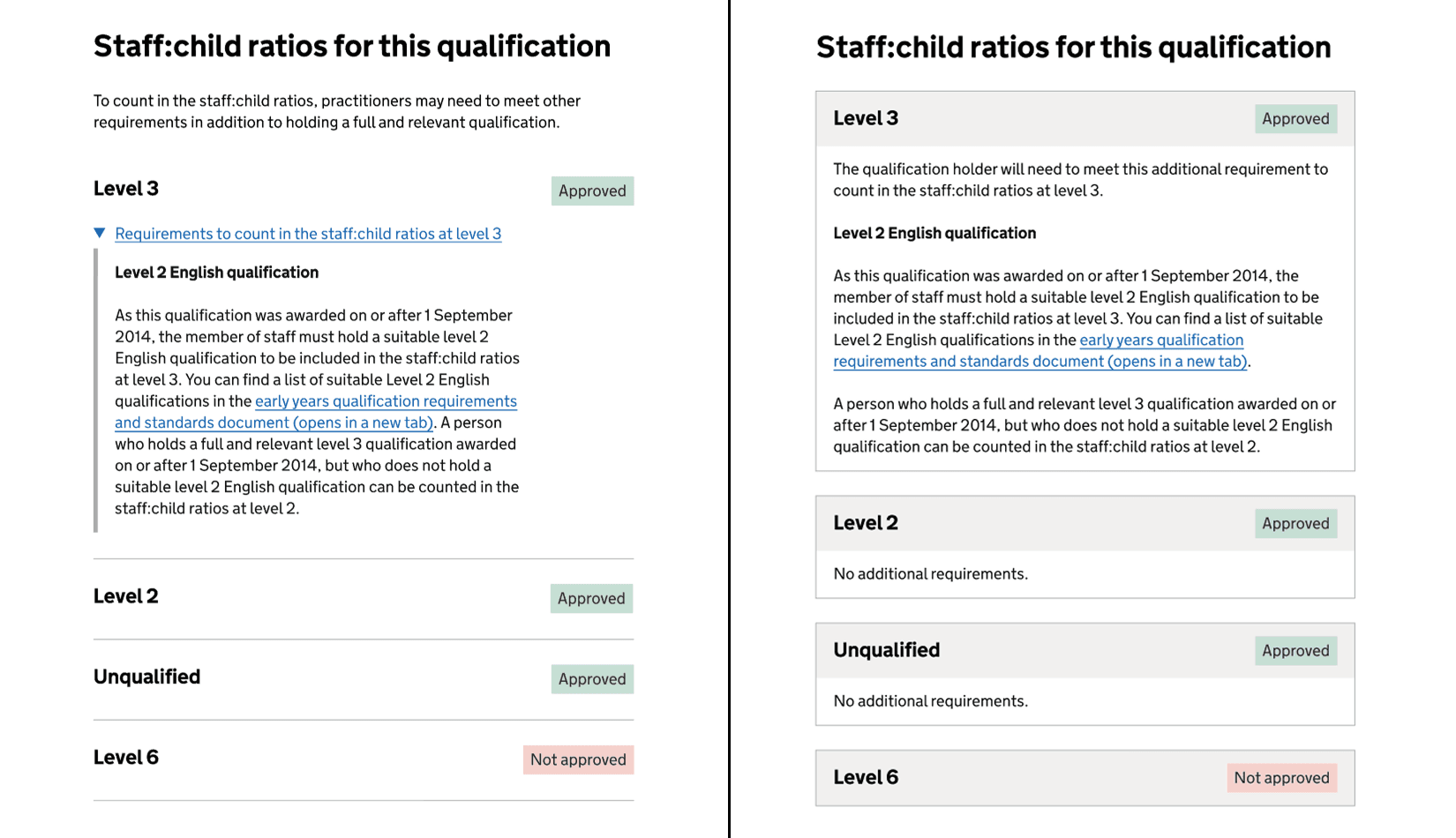Context
Based on the information users provide throughout the Check an early years qualification service — such as qualification level and start and award dates — the qualification result page shows different information under each staff:child ratio.
For example, depending on when the qualification was awarded:
- under Level 3, users may see information about the qualification holder needing a Level 2 English qualification and/or a Paediatric First Aid (PFA) certificate to work at that level
- under Level 2, users may see information about the qualification holder needing a PFA certificate to work at that level
Other variations include:
- When checking a Level 3 or above qualification that is not full and relevant, information about the possibility of working at Level 2 will show under Level 2.
- When checking a Level 2 qualification that is full and relevant, or a Level 3 or above qualification that is not full and relevant, information about the possibility of taking the experience-based route (EBR) will show under Level 3.
- When checking a degree that is not full and relevant, information about the possibility of taking the early years initial teacher training (EYITT) route will show under Level 6.
Initial design
We placed the information about the Level 2 English qualification and the PFA certificate inside details components under Level 2 and Level 3. The main purpose of the service is to give users an outcome on whether a qualification holder can work at specific staff:child ratios, so we kept this additional information hidden by default.
We used details components because Level 2 and Level 3 include some duplicated content. If we had displayed all of it at all times, the page would have become more content-heavy, and users might have skipped over important details.
Example of a qualification result page with details component collapsed and expanded:

Research and data
In research sessions, participants rarely expanded the details components unless prompted. They tended to rely on prior knowledge to interpret the requirements. When they did expand, many went straight to Level 3 (the highest level approved) and skipped Level 2. This suggested they saw it as redundant or were overconfident about what they would find.
When multiple details were expanded, participants often became confused. They thought the content was all part of the same set of requirements and found it hard to tell which requirements applied to which level.
Several participants asked why we did not simply display the information instead of hiding it behind an interaction.
Google Analytics data also showed that users’ interaction with the details component on the qualification result page was low.
As a result, important qualification requirements were often overlooked because users did not interact with the details components.
Design exploration
We explored removing the details components and showing all the information by default. This made the content more visible but created new issues: the page became lengthy, and we already had evidence that users rarely scrolled. It also increased cognitive load, as some levels contain long blocks of content depending on the qualification being checked.
We then reviewed components in the GOV.UK Design System and its backlog to see if another team had solved a similar problem. We could not find any examples to build on.
Limited team resources
Our research capacity was reduced because some team members were moving onto another project. This meant we could not run further user research until the end of the year.
What we changed
With these constraints in mind, we looked for a pragmatic approach that would make the content visible without making the page overwhelming. It also needed to be easier to scan and understand.
Since details components are not intended for information that all users need to see, we decided to remove them and present the information within a customised version of the GOV.UK summary card component. This required updating the content as well.
Customised summary card
Each level, its status and its requirements are now presented in summary cards. Grouping related information helps users quickly identify each staff:child ratio level, understand its status and see any requirements at a glance — without having to expand hidden content.

Summary cards also make it clearer where level-related information starts and ends, reducing ambiguity about what applies to each level.
The page shows different tag statuses against the levels:
- ‘Approved’ in green
- ‘Not approved’ in red
- ‘Possible route available’ in light blue
Content updates
Qualification holders are not always required to meet additional criteria to work at certain staff:child ratio levels. Previously, this was not explicitly stated. This could lead users to assume that information was missing or hidden.
To prevent this, we added ‘No additional requirement’ under each level where no further requirements apply. This reduces ambiguity and increases trust in the information provided.

During research, some participants were unsure whether qualification holders needed to meet requirements beyond those listed. To address this, we removed the sentence shown above the levels and added a new sentence inside each level, positioned above the requirements.

This makes clear that the listed requirement(s) are sufficient — nothing more, nothing less. It reassures users that they are not missing additional criteria.
The wording of this sentence varies depending on the qualification and award date:
- The qualification holder will need to meet this additional requirement to count in the staff:child ratios at level 3.
- The qualification holder will need to meet these additional requirements to count in the staff:child ratios at level 3.
- The qualification holder may need to meet this additional requirement to count in the staff:child ratios at level 2.
- The qualification holder will need to meet this additional requirement to count in the staff:child ratios at level 2.
Next steps
We plan to review a sample of heatmaps to check whether users try to click on the summary cards and whether they scroll through the page to see all the content.
We will also monitor how users respond to the new ‘No additional requirement’ row to confirm it reduces ambiguity as intended.
If the customised summary card pattern proves effective, we may share our findings with the GOV.UK Design System team to inform future component development.
